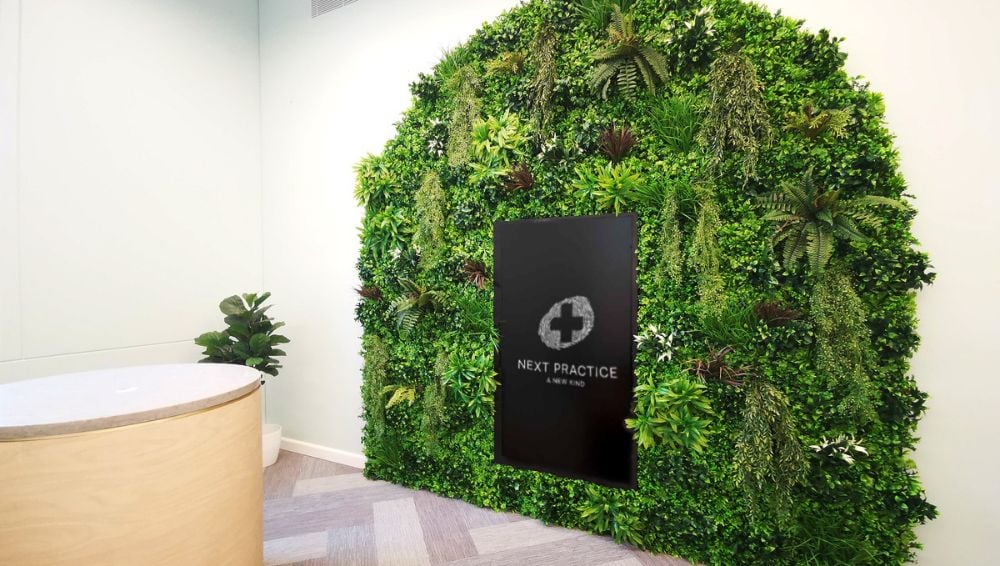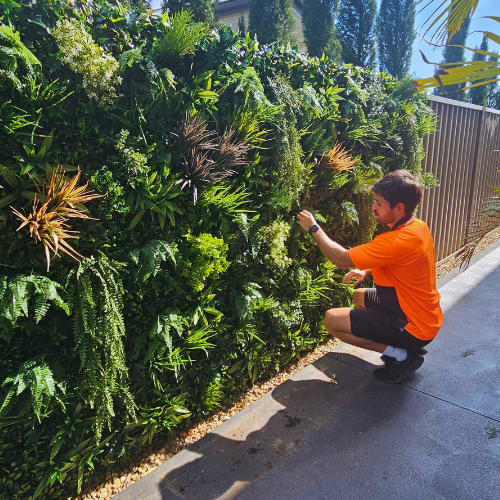Artificial greenery has become increasingly popular in recent years, and for good reason. These low-maintenance plants provide a year-round option for bringing the beauty of nature into any space without requiring the same care and attention as live plants. But what goes into creating these lifelike, high-quality artificial plants, and why is it important to choose the right materials?
.jpg)
The Manufacturing Process of Artificial Greenery
The manufacturing process of artificial greenery starts with the selection of materials. High-quality artificial plants are typically made from plastic due to its durability, realistic texture, and ability to mimic the appearance of real plants.
Once the materials have been selected, they are shaped using various techniques. One of the most effective techniques is injection molding, which involves injecting molten plastic into a mold to create a desired shape. This technique is particularly effective for creating the stems and leaves of artificial plants, as it allows for precise control over the shape and size of each individual component.
Other techniques used in the manufacturing of artificial greenery include die-cutting, thermoforming, and hand crafting. Die-cutting involves using a sharp blade to cut shapes out of flat sheets of material, while thermoforming involves heating a flat sheet of material until it becomes pliable and then shaping it using a mold. Hand crafting involves traditional techniques such as wire wrapping and flower arranging and is commonly used for creating bespoke artificial plants.
Once the individual components of the artificial plant have been created, they are assembled to create the final product. The stems are attached to the leaves and flowers, and the plant is arranged in a way that creates a realistic-looking plant.
Why Choosing 'Silk' Artificial Plants is a Bad Idea
While silk artificial plants may seem like an attractive option, they are not the best choice for a number of reasons. Most manufacturers advertise their plants or flowers as “silk" although they are made from rayon. Rayon is a synthetic fiber that is made from cellulose, I highly flammable material that can quickly ignite and spread flames. As a result, it is important to choose artificial greenery made from fire-retardant materials.
A part from safety, another major disadvantage of silk artificial plants is their durability. Their colours fade quickly once exposed to direct and indirect sunlight, leaving them looking dull and lifeless within as little as a few weeks.
In contrast, high-quality artificial greenery that's made from low density polyethylene (LDPE) offers a safer and more durable option. Quality artificial plants made from LDPE are treated with fire-retardant chemicals to prevent them from catching fire, instead dissipating into thin air. Artificial plants made from UV injected LDPE also maintain their vibrant colours for many years even when exposed to direct sunlight.
Choosing High-Quality Artificial Greenery
When it comes to choosing artificial greenery, it's important to select high-quality products that are made from durable materials and manufactured using effective techniques. At Evergreen Walls, we are committed to producing the highest quality and safest artificial plants and green walls for our customers. Our products are crafted using the best materials and manufacturing techniques available.
We offer a wide range of artificial plants and green walls to suit any space and style. From lush green walls to realistic-looking artificial plants, we have something to suit every need and budget. Contact us today to learn more about how we can help you incorporate artificial greenery into your internal or external space.
{{cta('e4bb760e-4fac-435b-984c-17e0573ffa7b')}}














